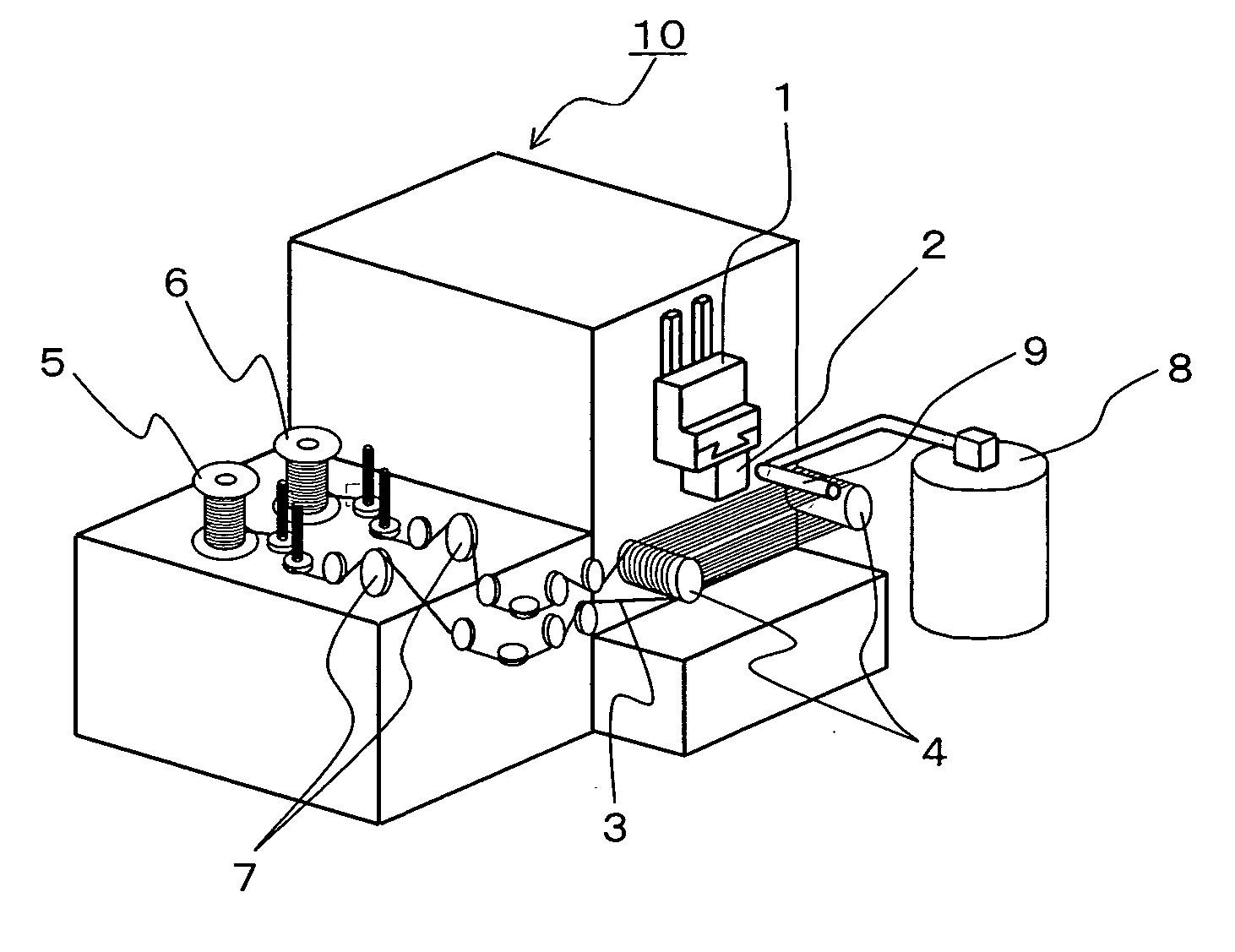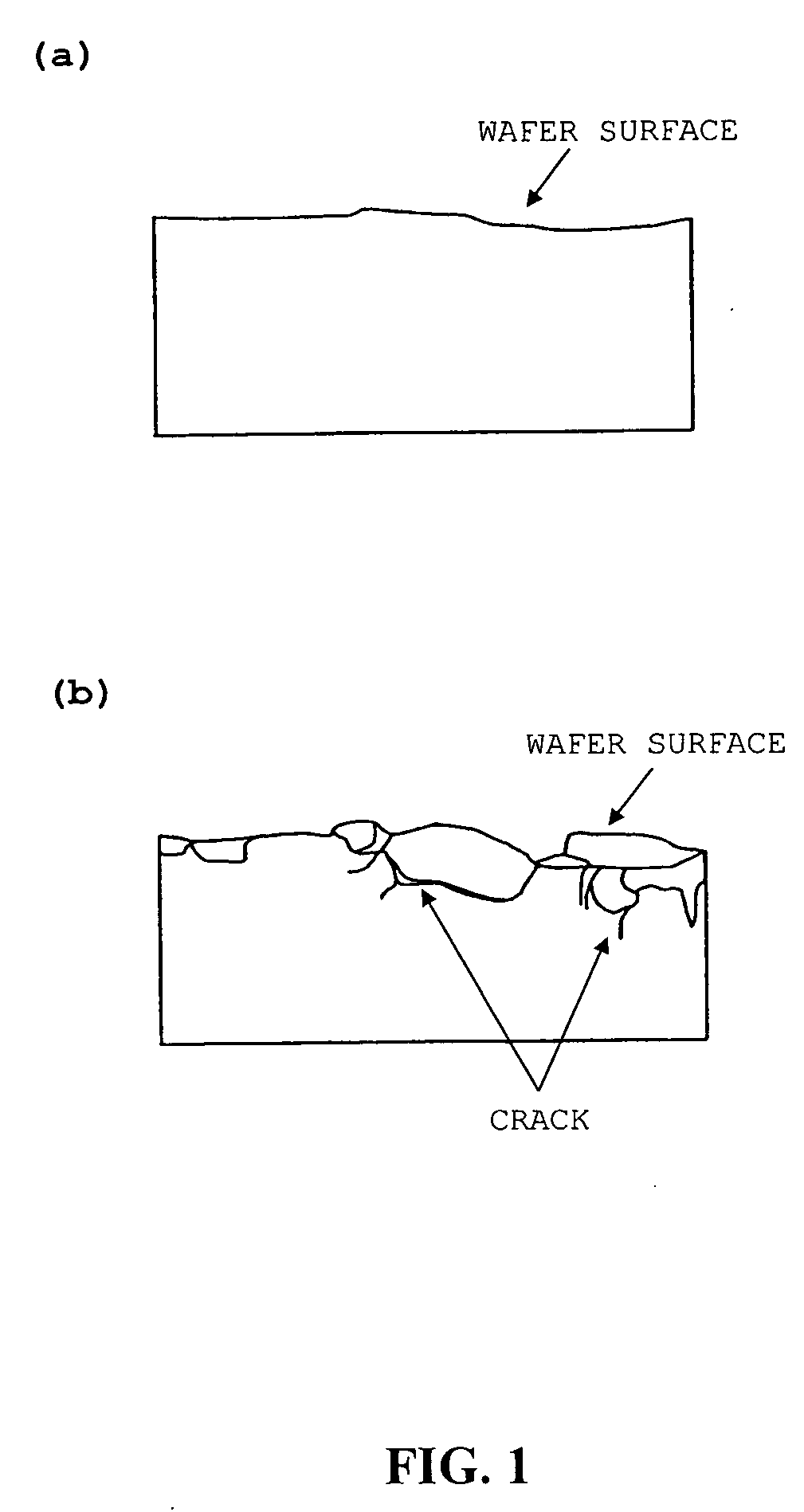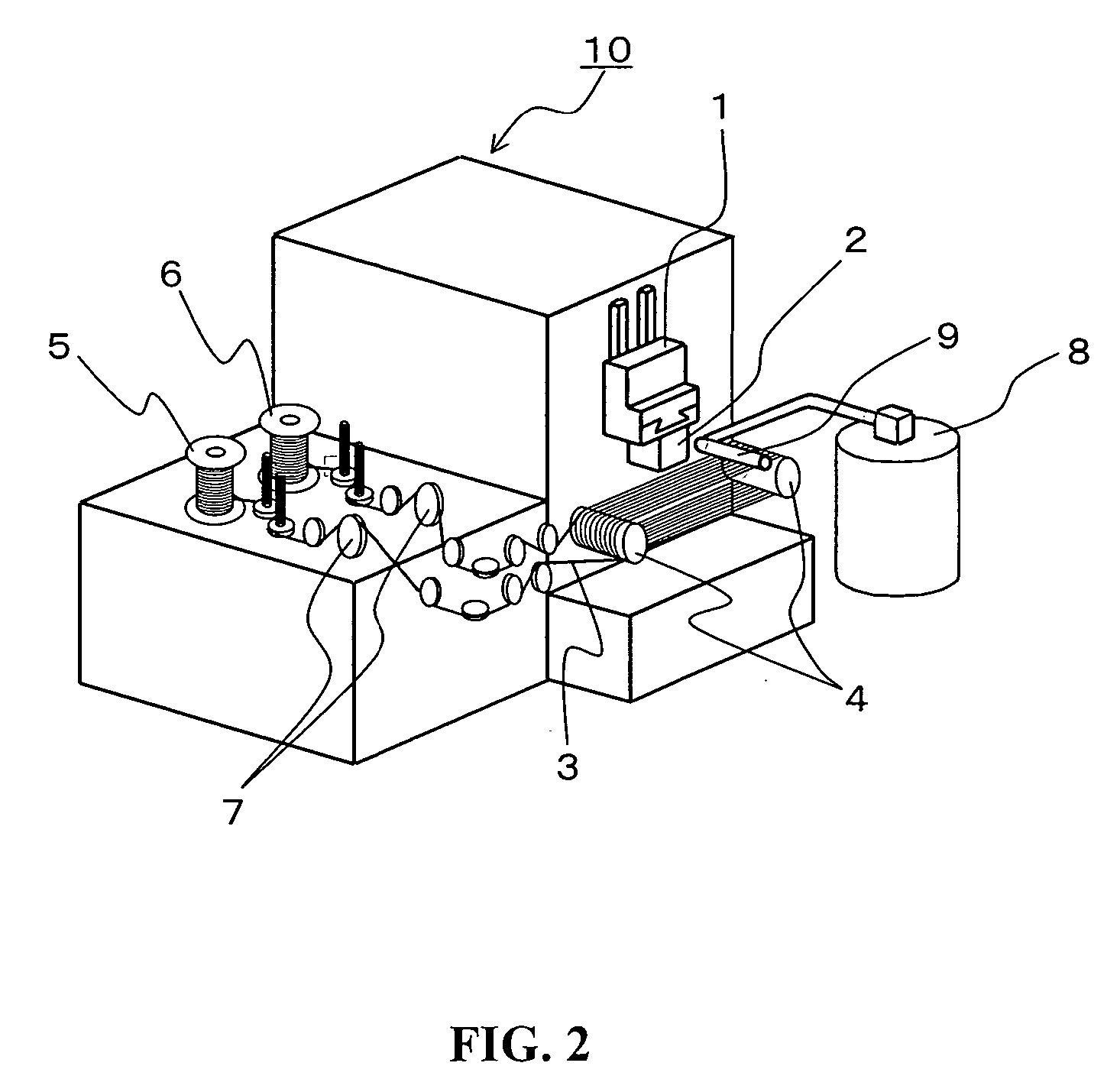Slurry for slicing silicon ingot and method for slicing silicon ingot using same
a silicon ingot and slurry technology, applied in the direction of other chemical processes, manufacturing tools, chemistry apparatus and processes, etc., can solve the problems of reducing cutting efficiency, reducing feeding speed, and reducing cutting resistance during cutting processing of silicon ingots, so as to achieve efficient cutting and high quality
- Summary
- Abstract
- Description
- Claims
- Application Information
AI Technical Summary
Benefits of technology
Problems solved by technology
Method used
Image
Examples
example 1
[0056] 8 parts by mass of sodium hydroxide were dissolved in 100 parts by mass of water to obtain a basic aqueous solution. This aqueous solution, 100 parts by mass of triethanolamine, and 100 parts by mass of polyethylene glycol were mixed. To this mixed solution, 100 parts by mass of SiC abrasive grains (GC#1000, average particle diameter: about 10 μm, produced by Fujimi Inc.) were added, followed by stirring, whereby a slurry for cutting a silicon ingot was prepared. At this time, the mass ratio of triethanolamine with respect to water in a liquid component of the slurry was 100÷100=1.0. Furthermore, the pH of the obtained slurry at 25° C. was 13.3, and the initial viscosity thereof at 90° C. and a shear velocity of 57.6[s−1] was 50 mPa·s.
[0057] A polycrystalline silicon ingot sample (3 mm×3 mm×thickness: 1 mm) was polished under the following polishing conditions using the obtained slurry for cutting a silicon ingot. The slurry was collected every predetermined time (0, 2, 4, a...
example 2
[0066] A polycrystalline silicon ingot sample (3 mm×3 mm×thickness: 1 mm) was polished under the following polishing conditions, using the same slurry for cutting a silicon ingot as that in Example 1. A polished amount was obtained from the change in mass of the sample before and after polishing, and the polished amount was divided by a polishing time to obtain a polishing speed. Table 3 shows the results.
Polishing paddiameter 200 mm (produced by Buhler,polishing buffer, ultra-pad for 8-inch wafer)Sample position65 mm from the center of the padRotation number of200 rpmpolishing tablePolishing time5 minutesSlurry supply amount65 cc / minuteSlurry supply position65 mm from the center of the pad, backwardrotation by 30° of the sampleSlurry temperature80° C.Sample pressure10 N
[0067] Next, the obtained wafer was washed with water, followed by drying. The polished surface of the ingot was observed with a microscope, and evaluated based on the following standard. Table 3 shows the results....
example 3
[0077] A slurry for cutting a silicon ingot containing 4.9% by mass of sodium hydroxide with respect to the total mass of a liquid component of a slurry, triethanolamine in a mass ratio of 0.5 with respect to water in the liquid component of the slurry, and 33% by mass of abrasive grains with respect to the total mass of the slurry was prepared, and the difference in cutting resistance caused by the difference in slurry temperature was investigated. The pH of the obtained slurry at 25° C. was 13.8.
[0078] A polycrystalline silicon ingot (each side: 150 mm, length: 25 mm) was cut with a multi-wire saw in FIG. 2 under the following cutting conditions using the obtained slurry for cutting a silicon ingot and the deformation amount of the wire during processing was measured with an eddy-current displacement sensor.
Wire diameter100 μm (Type SRH, produced by JFE Steel)Wire pitch0.39 mmWire feeding speed600 m / minuteSilicon ingot feeding speed0.35 mm / minuteSlurry temperature25° C., 80° C....
PUM
| Property | Measurement | Unit |
|---|---|---|
| mass ratio | aaaaa | aaaaa |
| average grain diameter | aaaaa | aaaaa |
| average grain diameter | aaaaa | aaaaa |
Abstract
Description
Claims
Application Information
 Login to View More
Login to View More - R&D
- Intellectual Property
- Life Sciences
- Materials
- Tech Scout
- Unparalleled Data Quality
- Higher Quality Content
- 60% Fewer Hallucinations
Browse by: Latest US Patents, China's latest patents, Technical Efficacy Thesaurus, Application Domain, Technology Topic, Popular Technical Reports.
© 2025 PatSnap. All rights reserved.Legal|Privacy policy|Modern Slavery Act Transparency Statement|Sitemap|About US| Contact US: help@patsnap.com



